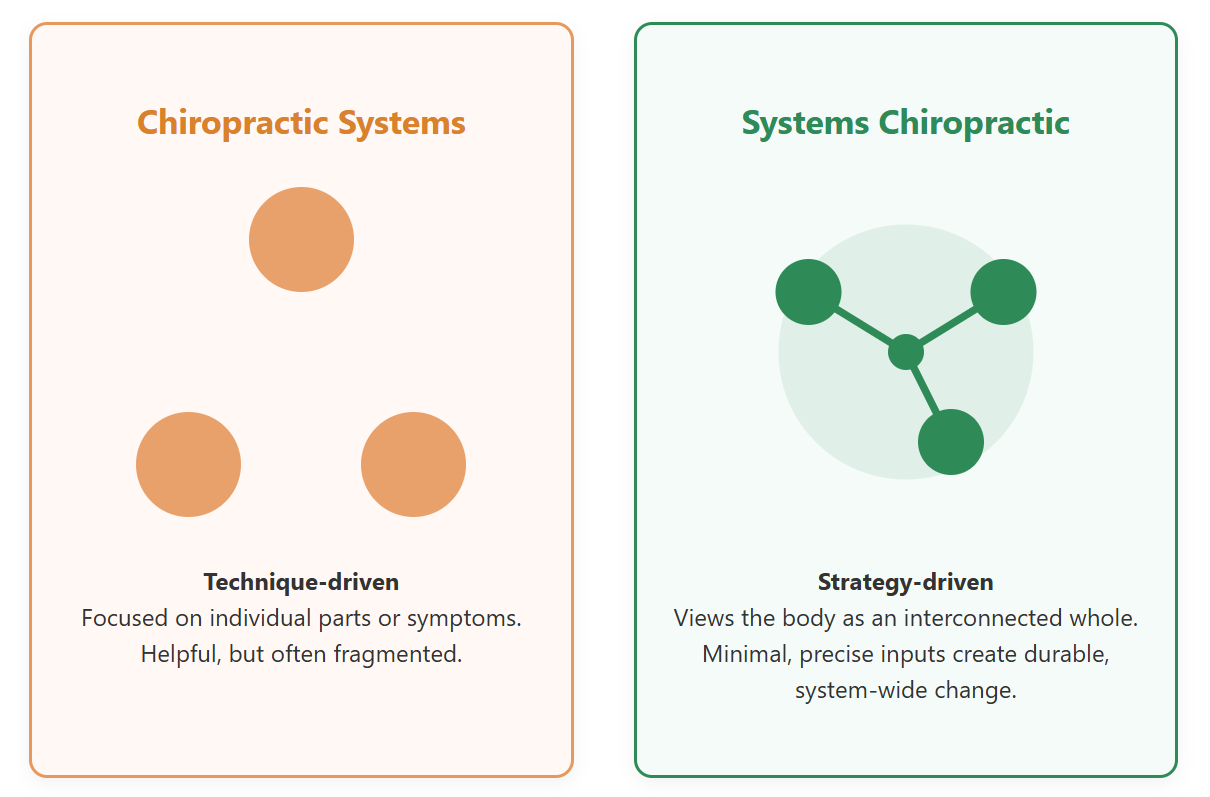Systems Chiropractic™
Precise and Holistic
Where clinical experience meets systems thinking
Systems Chiropractic™ was developed by Dr H. Peter Hong in Hong Kong through clinical practice up to April 2020, and continues as a research‑based framework for strategy‑guided chiropractic care.
Why Systems? Durable results through global orientation and leverage points
In everyday practice, many patients cycle between short‑term relief and recurring complaints. The pattern is familiar: local adjustments help for a while, then symptoms return or shift as stresses redistribute elsewhere. These realities point to a simple truth: problems are systemic, not singular. As a result, the true source is often overlooked—or remains hidden—even after an extended exam‑and‑treatment process.
A systems view tracks whole‑body patterns: how posture distributes load, where constraints accumulate, and which compensations recur. Low‑strain, direction‑specific inputs—chosen to fit the global postural map—consistently create broader and more lasting change than high‑force corrections.
Results improve further with a consistent sequence: first establish global orientation; then identify leverage points in the postural system—locations where small, direction‑specific inputs create system‑wide change; next apply the minimal effective vector; and finally verify the effects from whole to part and back again.
From these observations, the need is clear: practice requires more than preferred techniques. What practice needs is a framework to guide reasoning, locate leverage points, reduce unnecessary force, and ensure reproducible outcomes. Centered on the postural system, it links structure and function so decisions are guided by how the body distributes load. The goal is precise, humanistic care—less force, clearer choices, and results that last—because when problems arise from the system, solutions must be system‑guided.
Systems Chiropractic vs. Chiropractic Systems

A visual contrast: parts‑based vs. system‑driven care.
